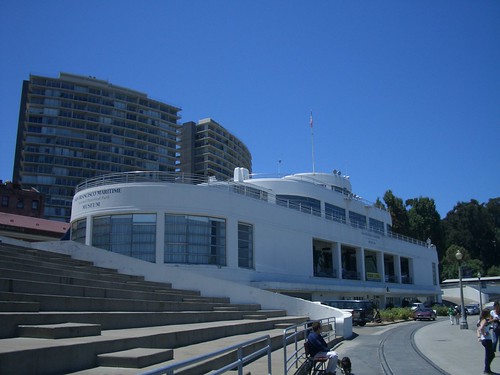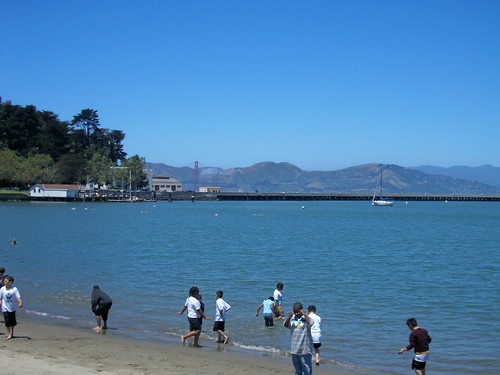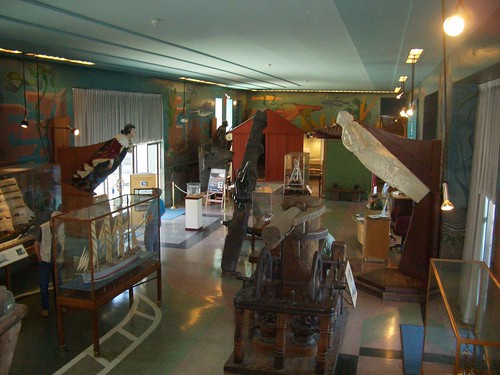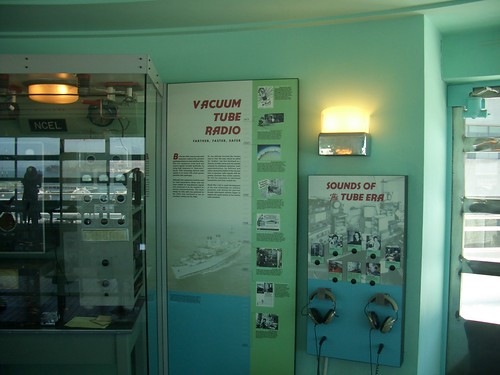The San Francisco Maritime Museum will close for three years in order to effect some badly needed repairs. The museum is an attraction that I had never gotten around to visiting, so a trip was overdue. Business activity was light because of the Fourth, so a long Friday lunch became easy to rationalize. Besides, the weather was nice. I rode the trolley to Fisherman’s Wharf and walked to Aquatic Park.
Auto traffic thinned past the Cannery, as tourists and joggers crowded the sidewalks. Lunching office-workers looked on from the bleachers as schoolchildren frolicked on the beach. Camera at the ready, I idly strolled along the path until my daydreams were interrupted by the shouted warnings from a group of cyclists. Okay, I shouldn’t operate electronic gadgets while I’m driving, but can’t I have the freedom to be distracted while ambling along the sidewalk?
The hip city says that it’s all right for two-wheelers to whiz by pedestrians, but citizens risk a fine if they try to light a cigarette. Outdoor second-hand smoke – hazardous. Hundreds of pounds of bicyclist bearing down at 25 MPH – no problem.
Entering the museum, I wandered among the exhibits, memories of a bygone age--a clichéd observation that is true of all museums—until one realizes that the bygone age existed very recently. For a little over a hundred years, from the Gold Rush to the mid-20th century, the Bay teemed with ships of all shapes and sizes.
The City wasn’t built on rock’n roll but by the cargo delivered by merchant vessels. The Gold Rush commenced decades before the transcontinental railroad was completed, and nautical transport was the only means to move large quantities of goods to the West Coast. Those days are all but forgotten, as is the difficulty of making the hazardous journey around the tip of South America. Today Bay traffic is pretty much limited to Asian cargo carriers, recreational sailboats, commuter ferries, and the U.S. Navy.
I gazed at the replicas of Liberty Ships, which Henry J. Kaiser turned out by the hundreds in the nearby Richmond shipyards. Without them the war might have lasted much longer. I spent a few minutes in the communications exhibit with its ancient Spark (the origin of the nickname “Sparks” for ship radio operators) and vacuum tube equipment.
It was time to leave, but not without saying a silent thank-you for the Maritime Museum’s founder, Scott Newhall, better known as the editor of the Chronicle during its golden years. He built well, but his creations are looking tattered around the edges. With enough money and time, one can be restored but I'm not so sure about the other. © 2006 Stephen Yuen




No comments:
Post a Comment